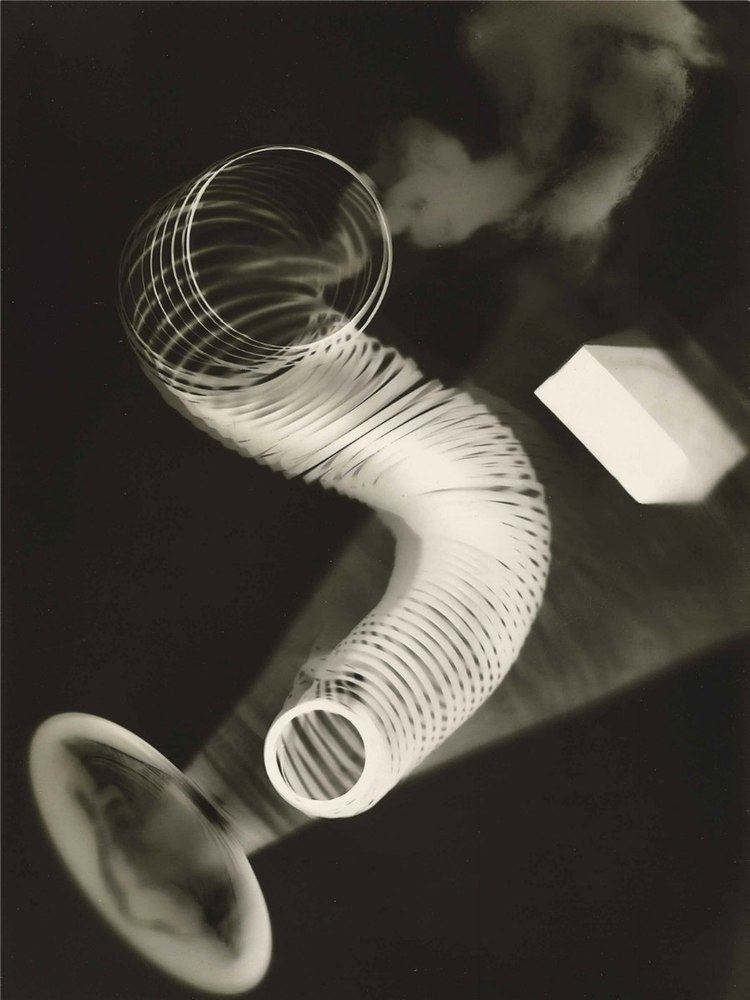 | ||
A photogram is a photographic image made without a camera by placing objects directly onto the surface of a light-sensitive material such as photographic paper and then exposing it to light. The usual result is a negative shadow image that shows variations in tone that depends upon the transparency of the objects used. Areas of the paper that have received no light appear white; those exposed through transparent or semi-transparent objects appear grey.
Contents
The technique is sometimes called cameraless photography. It was used by Man Ray in his exploration of rayographs. Other artists who have experimented with the technique include László Moholy-Nagy, Christian Schad (who called them "Schadographs"), Imogen Cunningham and Pablo Picasso. Variations of the technique have also been used for scientific purposes.
History
Some of the first photographic images made were photograms. William Henry Fox Talbot called these photogenic drawings, which he made by placing leaves and pieces of material onto sensitized paper, then left them outdoors on a sunny day to expose. This produced a dark background with a white silhouette of the object used.
From 1843, Anna Atkins produced a book titled British Algae: Cyanotype Impressions in installments; it was the first book to be illustrated with photographs. The images were all photograms of botanical specimens, which she made using Sir John Herschel's cyanotype process, which yields blue images. This very rare book can be seen in the National Media Museum in Bradford, England.
Man Ray's rayographs
Photograms were used in the 20th century by a number of photographers, particularly Man Ray, who called them "rayographs". His style capitalised on the stark and unexpected effects of negative imaging, unusual juxtapositions of identifiable objects (such as spoons and pearl necklaces), variations in the exposure time given to different objects within a single image, and moving objects as the sensitive materials were being exposed. Contemporary artists who are widely known for using photograms are Adam Fuss, Susan Derges and Christian Marclay.
Procedure
In a darkroom, or a darkened room, objects are arranged on top a piece of photographic material, usually photographic paper. When the operator is satisfied with the arrangement, the photographic material is exposed with light, usually by switching on an enlarger or other artificial light source. The material is then processed, washed and dried.
